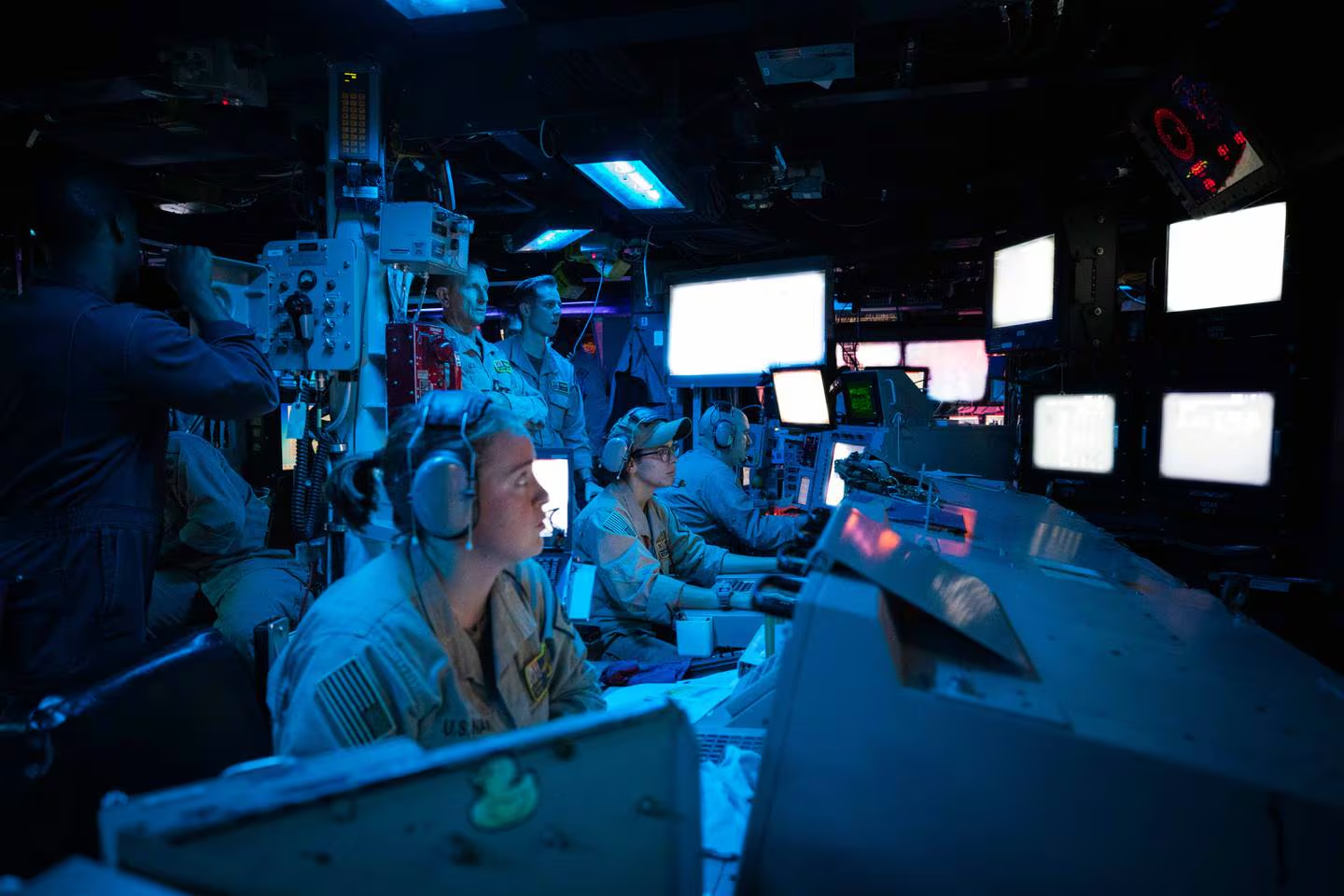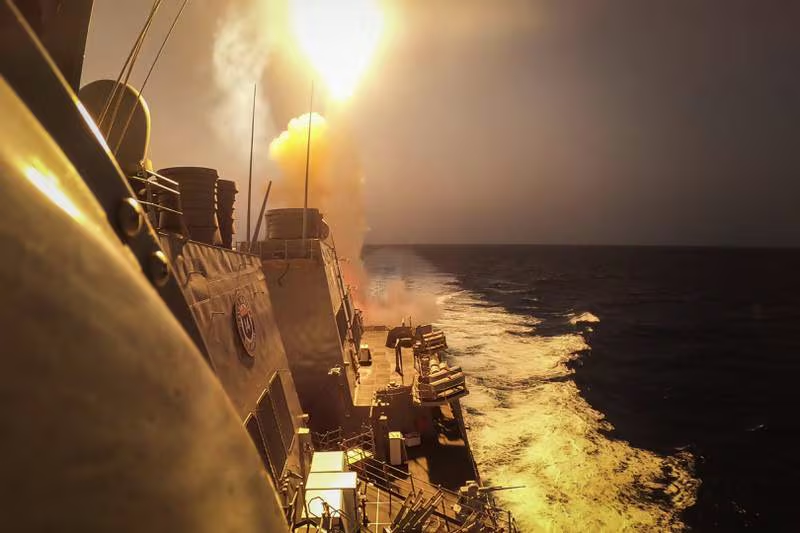
Bottom Line Up Front
- The US Navy has employed real-time over-the-air updates to improve weapons system performance on destroyers deployed to the Red Sea.
- Due to highly sensitive nature and potential for catastrophic consequences of faulty software update, Navy and its partners have developed a framework to rapidly develop, test, deploy, and evaluate such updates.
- This provides the advantage of rapidly adapting to changing adversary tactics and environmental challenges.
- On the flipside, this provides a potential attack vector from a cybersecurity standpoint, either via corruption of OTA signal, injection of false OTA data, or denial of signal reception.
Laying Down the Battlespace: Background
Over-the-air (OTA) updates provide a powerful use case for using space-based communications infrastructure to improve the performance of fielded assets, whether it be for the purposes of correcting software bugs, introducing new capabilities, or simply responding on a case-by-case basis to problems revealed by a given asset’s telemetry. Sometimes it may be as apparently trivial as providing an OTA update to correct the font size of warning text and icons on a user interface, as was required by a Tesla recall in early 2024.1
In other cases, the stakes may be much more in the realm of life-or-death. Megan Eckstein of Defense News reported in her March 2024 article, “US Navy making Aegis updates, training changes based on Houthi attacks,” the United States Navy had fielded OTA updates to bolster the performance of the Aegis Combat System carried aboard destroyers deployed to the Red Sea.2 The Aegis Combat System is vital in those ships’ effort to counter the numerous missile and drone attacks launched on military and commercial vessels alike since October 2023, of which there have been at least 40 publicly disclosed incidents in that timeframe.3 In addition to adapting to an ever-evolving adversary, naval units must also contend with their mandate to operate in disparate environments around the globe; Defense News highlights that the Red Sea provides particularly acute environmental challenges in terms of poor atmospheric conditions for radar performance for example, providing another vector through which OTA updates may provide a real-time advantage.
Change or Die: The Importance of Rapid Updates
The ongoing maritime conflict on the Red Sea has highlighted the necessity of rapidly adapting tactics and technology to a rapidly changing adversary. In any conflict, it should be expected that new capabilities will be fielded that will upend the previous way of doing things. Some of this can be rectified by surging more assets to a given area, or perhaps employing a different physical strategy. However, sometimes it will be necessary to modify the underlying technology that enables those warfighting capabilities in the first place. This feedback loop will only accelerate as artificial intelligence continues to be employed in ever more novel and creative ways. The Defense News article discusses how the US Navy and its partners have gone above and beyond the established practice of using satellite communications to provide rapid feedback on the operational picture and have taken the next step to actually transmit updates to improve fielded technologies live on the battlefield.
Navigating Changing Waters: The Approach
According to Defense News, the Navy’s effort in this area has centered on its Naval Surface and Mine Warfighting Development Center (SMWDC) in partnership with the Program Executive Office Integrated Weapons Systems, Naval Information Warfighting Development Center, Johns Hopkins Applied Physics Laboratory, and Lockheed Martin. This consortium has developed a highly responsive approach for the occasion, which it calls the “Aegis Speed to Capability” process. This process emphasizes rapid development, testing, and deployment of new software-based capabilities based on data mined from “storyboards” of missile and drone interactions with deployed destroyers and complemented by radar and other embedded sensor data from such events. After testing such updates on the USS Abraham Lincoln Carrier Strike Group during a Surface Warfare Advanced Tactical Training event to validate their effectiveness, they were pushed to destroyers on the front line. Commander of the SMWDC, Rear Admiral Wilson Marks declined to explicitly discuss the nature of these updates due to security concerns that should be self-evident; however, he did disclose that the OTA updates have already demonstrated “a significant increase in capability.”

The Soft Underbelly: Addressing Cybersecurity Challenges
The potential benefits of a mature OTA update capability for deployed weapons systems are indeed vast, but this capability’s advantages come coupled with some cybersecurity challenges that must be addressed before they turn a tactical win into a strategic loss. First, any time you open a new avenue through which an asset communicates with an external asset (spaceborne or otherwise), you increase the surface area by which cyberattacks may be launched. This may come in the form of the injection of false data along with the authentic signal transmission, corruption of the signal to the point of being unusable, or even outright denial of signal reception through jamming or electromagnetic pulse. The Defense News article noted the large team of different entities involved in data mining, developing, testing, and deploying software updates—each of these also provides a new attack vector in the overall supply chain that must be considered. Threats do not come at the point of signal reception alone. Strong cybersecurity practices at all stages of the “Aegis Speed to Capability” chain need to be employed to keep this game changing capability from flipping an advantage to a vulnerability.
- Aaron Gregg, “Tesla recalls nearly all U.S. vehicles over font sizes on warning lights,” The Washington Post, https://www.washingtonpost.com/business/2024/02/02/tesla-recall-font-sizes/, published 2 February 2024, accessed 17 June 2024. ↩︎
- Megan Eckstein, “US Navy making Aegis updates, training changes based on Houthi attacks,” Defense News, https://www.defensenews.com/naval/2024/03/21/us-navy-making-aegis-updates-training-changes-based-on-houthi-attacks/, published 21 March 2024, accessed 17 June 2024. ↩︎
- Lehrfeld, Stancy, & Ziezulewicz, “All the Houthi-US Navy incidents in the Middle East (that we know of),” Military Times, https://www.militarytimes.com/news/your-military/2024/02/12/all-the-houthi-us-navy-incidents-in-the-middle-east-that-we-know-of/, published 12 February 2024 and last updated 14 June 2024, accessed 17 June 2024. ↩︎